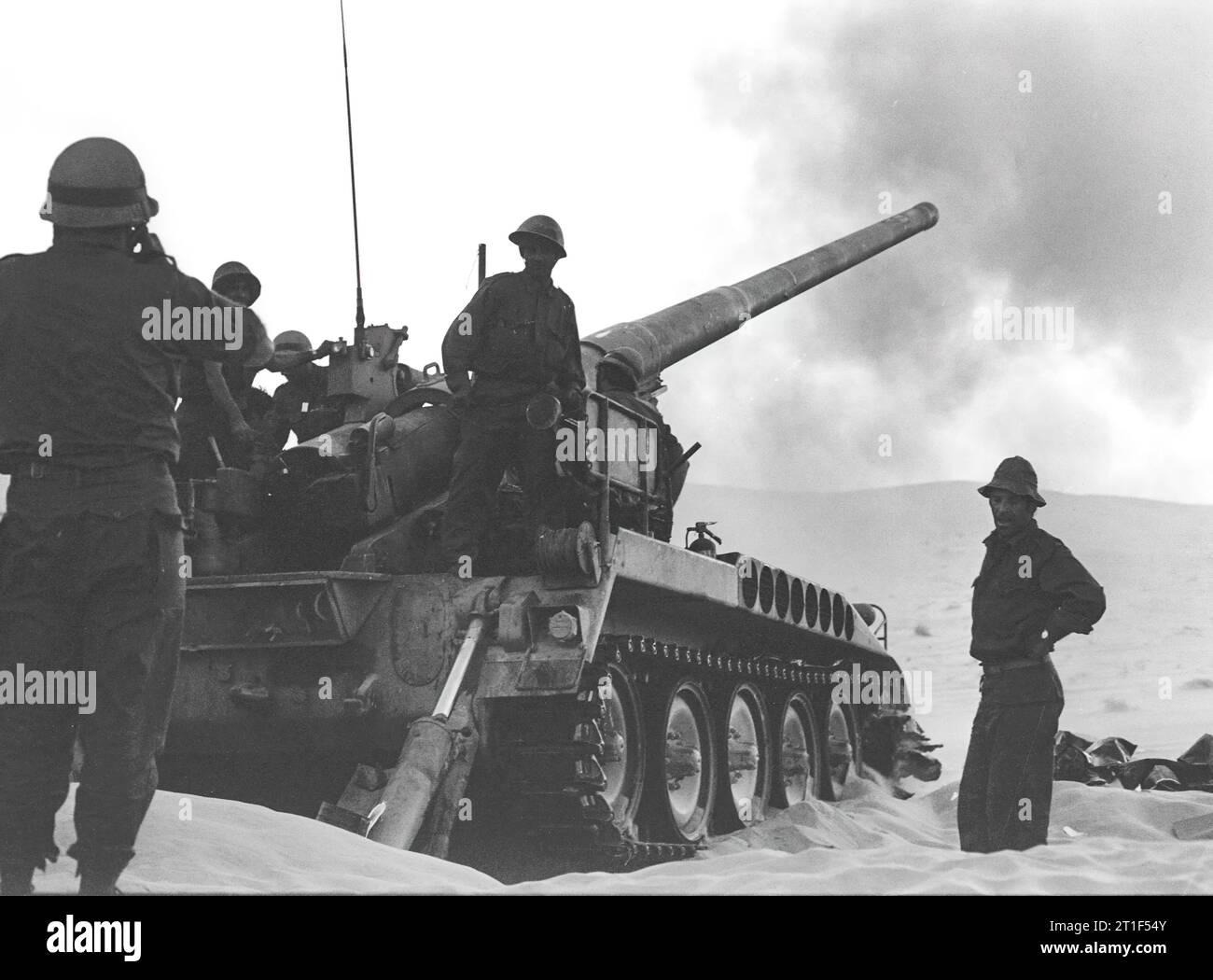YOM KIPPUR WAR. ISRAELI 175 MM GUNS GIVING ARTILLERY SUPPORT DURING THE CROSSING OF THE SUEZ CANAL. IDF photograph by YUDKOVSKY

Image details
Contributor:
American Photo Archive / Alamy Stock PhotoImage ID:
2T1F54YFile size:
65 MB (2.9 MB Compressed download)Releases:
Model - no | Property - noDo I need a release?Dimensions:
5546 x 4096 px | 47 x 34.7 cm | 18.5 x 13.7 inches | 300dpiDate taken:
1973Location:
Middle EastMore information:
This image could have imperfections as it’s either historical or reportage.
The Yom Kippur War, also known as the Ramadan War, the October War, the 1973 Arab–Israeli War, or the Fourth Arab–Israeli War, was an armed conflict fought from 6 to 25 October 1973, between Israel and a coalition of Arab states led by Egypt and Syria. The majority of combat between the two sides took place in the Sinai Peninsula and the Golan Heights—both of which were occupied by Israel in 1967—with some fighting in African Egypt and northern Israel.Egypt's initial objective in the war was to seize a foothold on the eastern bank of the Suez Canal and subsequently leverage these gains to negotiate the return of the rest of the Israeli-occupied Sinai Peninsula. The war began on 6 October 1973, when the Arab coalition jointly launched a surprise attack against Israel on the Jewish holy day of Yom Kippur, which had occurred during the 10th day of the Islamic holy month of Ramadan in that year.Following the outbreak of hostilities, both the United States and the Soviet Union initiated massive resupply efforts to their allies (Israel and the Arab states respectively) during the war, which led to a confrontation between the two nuclear-armed superpowers. Fighting commenced when Egyptian and Syrian forces crossed their corresponding ceasefire lines with Israel and entered the Sinai Peninsula and the Golan Heights. Egyptian forces crossed the Suez Canal in Operation Badr and advanced into the Sinai Peninsula; the Syrians launched a coordinated attack in the Golan Heights to coincide with the Egyptian offensive and initially made gains into Israeli-held territory. After three days of heavy fighting, Israel halted the Egyptian offensive, resulting in a military stalemate on that front, and pushed the Syrians back to the pre-war ceasefire lines. The Israeli military then launched a four-day-long counter-offensive deep into Syria, and within a week Israeli artillery began to shell the outskirts of the Syrian capitol.